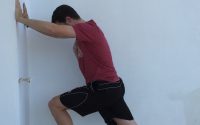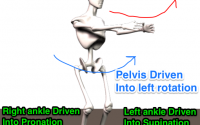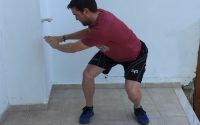How do we Run?
I have a good friend who was trying to break 3 hours for a marathon. After a couple of very, very near misses I asked/invited myself over to share my thoughts on running. I wrote a powerpoint presentation that was far too long…but I hoped would help get him to his goal.
My theory was almost entirely based on an idea I had while out riding my bike. It wasn’t about putting more effort in to running faster, it was all about maintaining technique under massive fatigue and avoiding slowing yourself down.
The whole idea started with one simple question ‘How do we Run?’.
My idea was basically that we don’t know how we run, which led me to my next question…’if you don’t know how you run, how can you try harder?’.
For those that have read my blog for a while will know that I believe passionately in rehab exercise being authentic and subconsciously driven. Our movement is definitely at it’s best when we aren’t thinking about it and our subconscious brain is just running things for us. It struck me that the same is true in performance.
So, how do we run and try harder to run, without ruining our running? You run most effectively when it is subconsciously driven.
The trick is not to put out more energy, but to not waste energy on non productive movements…you need all the energy you have for the productive movements! By trying too hard you are most likely create excessive axial rotation, this has a massive knock on effect on your running.
Efficient running requires the use of reactive energy to go from one stride to the next. The excessive axial rotation during one stride will have to be corrected on the next step. This delays the next stride meaning the reactive energy is lost…so your increased effort could actually slow you down!! Not what you need after 20+ miles of hard work.
The most common area I see to address is the toe off. When people try harder they try to ‘push off’ harder. This will create a huge amount of axial rotation. You do not push off when you are steady state running. Toe off is created by the return of elastic energy and the pulling of the leg from the hip flexors.
As you fatigue the natural running is much harder to do and the elastic energy may be less. However, you don’t want to compound the issue. My suggestion is that when you get to this point you concentrate not on pushing off, but on pulling the leg forward. This quick movement of the back leg pulling forward allows the front leg to use its reactive energy and the running remains much more efficient and your efforts will maintain a much higher running speed.
I have no way of knowing how much I helped, but I hoped it would be the 1-2% improvement needed to dip under 3 hours. From memory it wasn’t on the next attempt, but on the one after that he ran 2:59…an awesome effort 🙂
On a slightly different note I seem to remember that he used some of the technique understanding to see when his competitors were hitting their limit…and then attacking!! A sneaky side effect 🙂
This is only one small aspect of running technique, so we will have to come back to this in the future and cover some of the other areas of how we run.
Physioblogger


